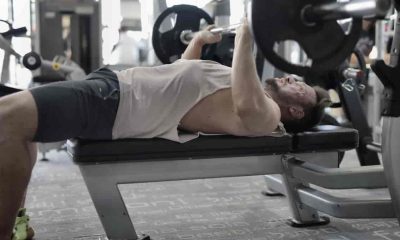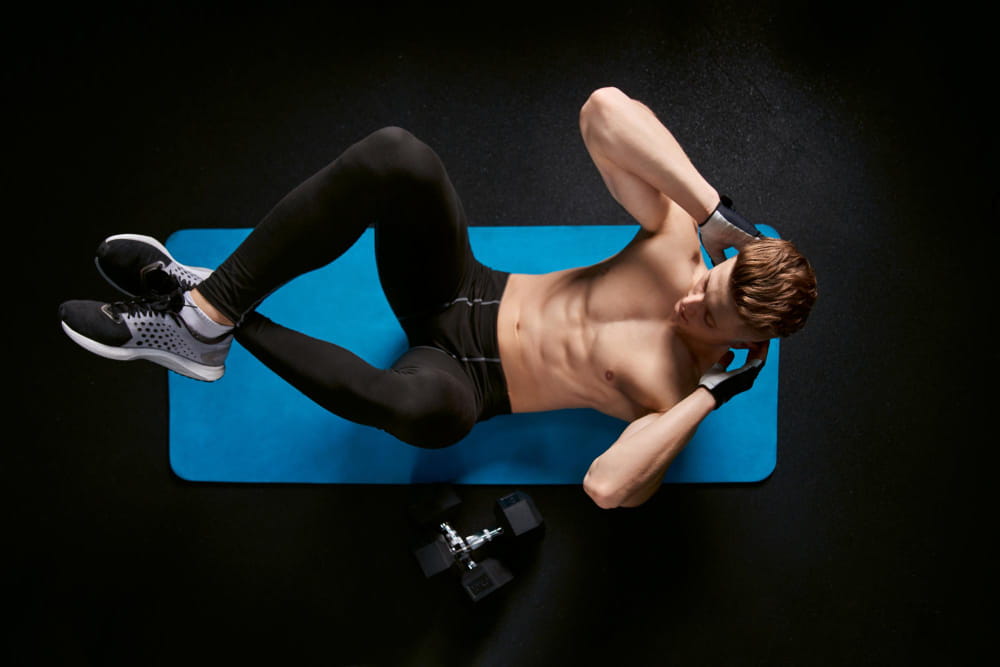Exercise
How Many Calories Burn When Walking: A Comprehensive Guide
how many calories burn when walking

Here is your complete guide to how many calories burn when walking
Introduction To How Many Calories Burn When Walking
How many calories burn when walking? Walking is a simple yet powerful exercise that offers numerous health benefits, including weight management. One key aspect of weight management is understanding how many calories you burn while walking. In this comprehensive guide, we will delve into the science behind calorie burn during walking, learn how to calculate it accurately, explore various walking techniques, and discover how walking can help you achieve your weight loss goals. So, lace up your walking shoes and let’s get started!
Understanding Calorie Burn
Before we dive into the specifics of calorie burn during walking, let’s first understand what calories are and how they relate to weight loss and weight gain. Calories are units of energy that our bodies need to perform various functions, including physical activity. When we consume more calories than we burn, the excess energy is stored as fat, leading to weight gain. Conversely, when we burn more calories than we consume, our bodies tap into those stored fat reserves, resulting in weight loss.

The Science Behind Calorie Burn During Walking
Walking is a fantastic way to burn calories, and its effectiveness depends on several factors. First and foremost, the number of calories you burn during walking depends on your body weight. Heavier individuals tend to burn more calories because it requires more energy to move their bodies. The speed at which you walk also plays a role. Walking at a brisk pace will increase your calorie burn compared to a leisurely stroll.
Additionally, the duration of your walk contributes to the total calorie burn. The longer you walk, the more calories you’ll burn. However, it’s important to note that even a short walk can make a positive impact on your health and overall calorie expenditure.
Calculating Calorie Burn While Walking
Now that we understand the factors influencing calorie burn, let’s explore how to calculate it accurately. An easy way to estimate the calories burned during walking is by using a simple formula:
Calories Burned = Body Weight (in kg) × Distance (in km) × MET (Metabolic Equivalent of Task)
MET is a measure of energy expenditure, and different walking speeds have different MET values. For instance, a leisurely walk might have a MET value of 2.9, while a brisk walk can be around 4.3. By multiplying your body weight, distance, and MET value, you can obtain an estimate of the calories burned.
To make things even more convenient, various online tools and smartphone apps are available to help you calculate calorie burn accurately based on your specific parameters.
Walking for Weight Loss
Walking is a valuable tool for weight loss. Not only does it burn calories, but it also helps build lean muscle mass and increase metabolism. Incorporating regular walks into your routine can create a calorie deficit, leading to gradual and sustainable weight loss.
To maximize calorie burn during your walks, consider the following tips:
- Increase your walking speed gradually: As your fitness improves, try walking at a brisk pace to increase your heart rate and calorie burn.
- Incorporate inclines and hills: Walking uphill or on an inclined surface engages more muscles, resulting in higher calorie expenditure.
- Add intervals: Intermittently increase your pace or include short bursts of jogging to challenge your body and boost calorie burn.
- Longer walks or multiple shorter walks: Aim for longer walks or break your walks into multiple shorter sessions throughout the day to accumulate more steps and increase calorie burn.

Types of Walking and Calorie Burn
Walking encompasses various techniques that can further enhance your calorie burn. Let’s explore some common types of walking:
Brisk Walking
This involves walking at a pace that is faster than your normal speed, but not quite a jog. Brisk walking elevates your heart rate and burns more calories compared to a leisurely stroll.
Power Walking
Power walking involves purposeful arm movement and a quicker pace than brisk walking. It engages more muscles and increases calorie burn, making it an excellent option for those looking to maximize their walking workouts.
Uphill Walking
Walking uphill requires more effort and activates your leg muscles, glutes, and core to a greater extent. It intensifies your calorie burn and helps strengthen your lower body.
Nordic Walking
Nordic walking incorporates the use of poles, which engage your upper body muscles, including your arms, shoulders, and back. This full-body workout not only burns more calories but also improves balance and posture.
Interval Walking
Interval walking alternates between periods of higher intensity, such as brisk walking or jogging, and recovery periods of moderate-paced walking. This approach boosts calorie burn and improves cardiovascular fitness.
Boosting Calorie Burn with Interval Walking
Interval walking is a fantastic strategy to maximize calorie burn. By incorporating short bursts of higher intensity exercise, such as jogging or brisk walking, you can elevate your heart rate and push your body to burn more calories. Here’s a sample interval walking routine to get you started:
- Warm-up: Begin with a 5-minute warm-up of leisurely walking to prepare your muscles and joints.
- Interval Sets: Alternate between 1 minute of brisk walking or light jogging and 2 minutes of moderate-paced walking for a total of 20 minutes.
- Cool-down: Finish your workout with a 5-minute cool-down, gradually decreasing your pace until you reach a comfortable walking speed.
Combining Walking with Other Activities
To further enhance your calorie burn and overall fitness, consider combining walking with other activities. Here are a few suggestions:
- Strength Training: Incorporate strength training exercises, such as bodyweight exercises or weightlifting, on alternate days to build muscle and increase your metabolism.
- Yoga or Pilates: Practice yoga or Pilates to improve flexibility, core strength, and posture. These activities complement walking and provide a holistic approach to fitness.
- Active Commuting: Whenever possible, choose walking or cycling as your mode of transportation instead of driving. This way, you can accumulate more steps and burn additional calories throughout the day.
Walking for Specific Goals
While calorie burn is an essential aspect of walking, it’s crucial to remember that walking offers numerous other benefits. Here are a few specific goals you can achieve through walking:
Cardiovascular Health
Walking regularly helps improve heart health, reduces the risk of cardiovascular diseases, and strengthens the cardiovascular system.
Stress Relief and Mental Well-being
Walking in nature or engaging in mindful walking can reduce stress, boost mood, and improve overall mental well-being.
Active Recovery
Walking can serve as a low-impact activity for active recovery on rest days from more intense workouts, helping to alleviate muscle soreness and improve circulation.
Types of Calories Burned When Walking
| Type of Calorie | Description |
|---|---|
| Basal Metabolic Rate (BMR) Calories | These are the calories burned at rest to maintain essential bodily functions such as breathing, circulation, and cell production. Walking contributes to the overall calorie burn by increasing the body’s energy expenditure above the BMR. |
| Aerobic Calories | These are the calories burned during aerobic activities that raise the heart rate and increase oxygen consumption, such as brisk walking. Aerobic exercise utilizes oxygen to generate energy and burns calories to fuel the muscles. |
| Fat Calories | Walking at a moderate pace primarily taps into the body’s fat stores for energy. The body converts stored fat into usable energy during aerobic activities like walking, resulting in the burning of fat calories. |
| Carbohydrate Calories | When walking at a faster pace or engaging in more intense walking exercises, the body relies on readily available carbohydrates for quick energy. Walking at higher speeds or inclines burns more carbohydrate calories. |
| Total Calories | The total number of calories burned during walking is the sum of BMR calories, aerobic calories, fat calories, and carbohydrate calories. This reflects the overall energy expenditure during the activity. |
How Many Calories Burned on a Brisk Walk?
| Brisk Walking Pace | Calories Burned (30 Minutes) | Calories Burned (1 Hour) |
|---|---|---|
| 3.5 mph (5.6 km/h) | 120-140 calories | 240-280 calories |
| 4.0 mph (6.4 km/h) | 140-160 calories | 280-320 calories |
| 4.5 mph (7.2 km/h) | 160-190 calories | 320-380 calories |
| 5.0 mph (8.0 km/h) | 190-220 calories | 380-440 calories |
How Many Calories Burned on a Typical Walking Pace?
| Walking Speed | Calories Burned (30 Minutes) | Calories Burned (1 Hour) |
|---|---|---|
| 2.0 mph | 80-100 calories | 160-200 calories |
| 2.5 mph | 95-115 calories | 190-230 calories |
| 3.0 mph | 110-130 calories | 220-260 calories |
How Many Calories Burned at Higher Walking Speeds?
| Walking Speed | Calories Burned (30 Minutes) | Calories Burned (1 Hour) |
|---|---|---|
| 3.5 mph | 120-140 calories | 240-280 calories |
| 4.0 mph | 140-160 calories | 280-320 calories |
| 4.5 mph | 160-190 calories | 320-380 calories |
| 5.0 mph | 190-220 calories | 380-440 calories |
Frequently Asked Questions about How Many Calories Burn When Walking
Does walking speed affect calorie burn?
Absolutely! Walking at a faster pace burns more calories compared to a leisurely stroll. Increasing your walking speed can significantly enhance your calorie expenditure.
Is it better to walk longer or faster for weight loss?
Both longer walks and faster walks contribute to weight loss. However, increasing your walking speed and maintaining a brisk pace can result in a higher calorie burn in a shorter duration of time.
Can walking alone help me lose weight?
While walking alone can contribute to weight loss, it’s essential to combine it with a healthy diet and possibly other forms of exercise to create a calorie deficit for sustainable weight loss.
How can I stay motivated to walk regularly?
Setting goals, tracking your progress, finding a walking buddy, or listening to music or podcasts can help you stay motivated and make walking a consistent part of your routine.
How many calories does a 30-minute walk burn?
The number of calories burned during a 30-minute walk depends on various factors, including your body weight, walking speed, and intensity. On average, a person weighing around 155 pounds (70 kg) can burn approximately 120-150 calories during a 30-minute brisk walk. However, this number can vary for individuals with different body weights and walking speeds.
Read More About How Much Protein to Build Muscle.
How many calories does a 1-hour walk burn?
A 1-hour walk can significantly increase your calorie burn compared to a shorter walk. Again, the number of calories burned will depend on factors like body weight and walking speed. On average, a person weighing around 155 pounds (70 kg) can burn approximately 240-300 calories during a 1-hour brisk walk. However, this number can vary based on individual factors.
Read More About The Nutritional Facts of Sushi.
How long of a walk will burn 1000 calories?
To burn 1000 calories through walking alone, you would need to consider factors such as your body weight, walking speed, and intensity. On average, a person weighing around 155 pounds (70 kg) can burn approximately 120-150 calories per 30 minutes of brisk walking. Therefore, to burn 1000 calories, it would take around 3.5 to 4.5 hours of continuous brisk walking. Keep in mind that breaking up your walking sessions throughout the day can also help you reach your calorie burn goal.
Read More About The Power of Proper Nutrition.
Can I burn 1000 calories a day by walking?
Burning 1000 calories solely through walking can be challenging, as it would require a substantial time commitment. However, incorporating other activities, adjusting your walking speed, and maintaining an active lifestyle can help you increase your overall calorie burn. Combining walking with other forms of exercise, such as strength training or high-intensity interval training, can help you reach a higher calorie burn. It’s important to consult with a healthcare professional or a certified fitness trainer to design a well-rounded exercise routine that aligns with your goals and abilities.
Read More About Whey Protein Expire?
Conclusion
In conclusion, walking is a fantastic form of exercise that offers numerous benefits, including calorie burn and weight management. By understanding the science behind calorie burn, calculating it accurately, and exploring different types of walking, you can make the most out of your walking workouts. Whether you choose brisk walking, power walking, uphill walking, or interval walking, each technique adds variety and intensity to your routine, leading to increased calorie burn.
Read More About Sit-Ups vs. Crunches.
Combining walking with other activities, such as strength training or yoga, can further enhance your overall fitness and calorie expenditure. Remember that walking is not only beneficial for weight loss but also for cardiovascular health, stress relief, and mental well-being. It is a versatile and accessible exercise that can be customized to suit your specific goals and preferences.
Read More About the Benefits of Good Morning Exercise.
So, put on your walking shoes, step outside, and embrace the power of walking. As you take those strides, know that you are not only burning calories but also improving your overall health and well-being. Start with small steps, gradually increase your intensity, and make walking a part of your daily routine. Your body will thank you for it, and you’ll be amazed at the positive changes that walking can bring to your life.
Read More About The Ultimate Warm-Up Routine for a Killer Back Workout.
Remember, every step counts, and with determination and consistency, you can achieve your fitness goals while enjoying the many benefits of walking. So, go ahead and take that first step towards a healthier and more active lifestyle. Happy walking!
Exercise
Does Creatine Help Grow Glutes? Proven Methods Inside
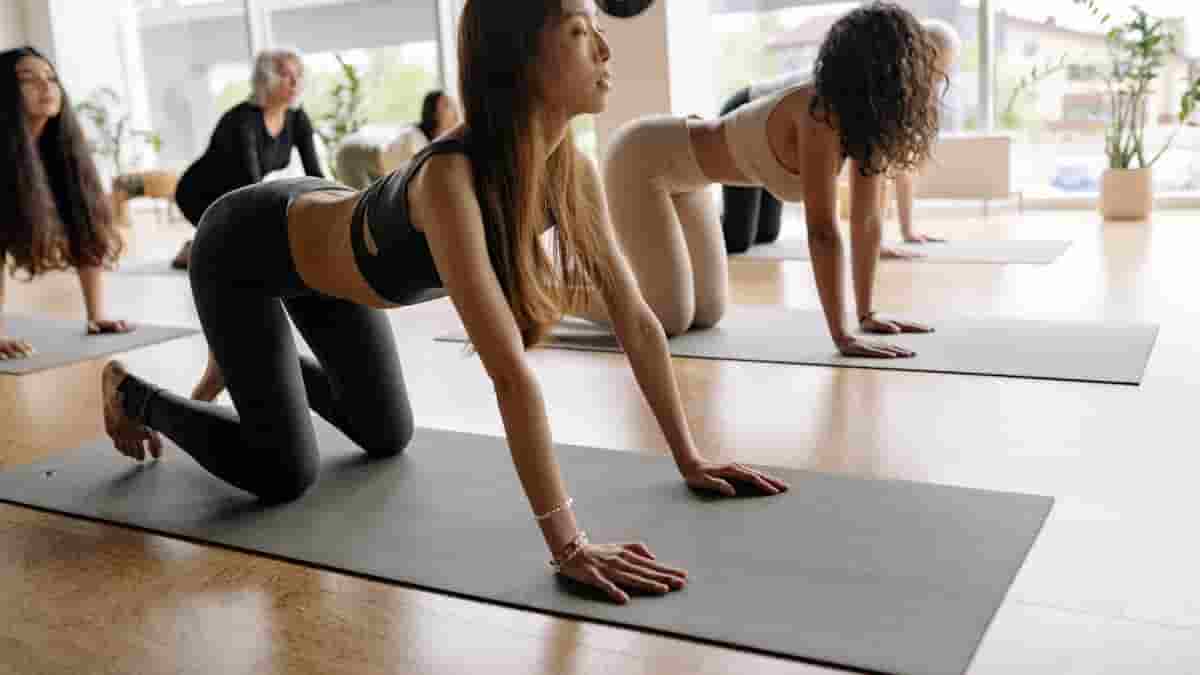
Here is your complete guide to does creatine help grow glutes.
Introduction to Does Creatine Help Grow Glutes
Does creatine help grow glutes? Creatine is a well-known supplement in the fitness community, celebrated for its ability to enhance muscle growth and improve athletic performance. However, with the rising interest in developing a stronger and more defined posterior, many individuals are asking: does creatine help grow glutes? In this article, we will explore the science behind creatine, its effects on muscle growth, and specifically its role in glute development.
What is Creatine?
Creatine is a naturally occurring compound found in small amounts in certain foods and synthesized in the body from amino acids. It is primarily stored in skeletal muscle and plays a vital role in energy production, particularly during high-intensity exercise.
Key Facts About Creatine
| Fact | Details |
|---|---|
| Chemical Structure | A compound made from three amino acids: arginine, glycine, and methionine. |
| Sources | Found in red meat, fish, and dairy products. |
| Forms | Available as creatine monohydrate, ethyl ester, and buffered creatine. |
| Function | Increases ATP production, enhancing energy availability during workouts. |
Creatine and Muscle Growth
One of the primary benefits of creatine supplementation is its ability to increase the availability of adenosine triphosphate (ATP), the energy currency of the cell. During high-intensity workouts, ATP is rapidly consumed, and creatine helps replenish it, allowing for sustained performance.
- Increased ATP Availability: Creatine enhances the regeneration of ATP, enabling you to perform more repetitions or lift heavier weights.
- Improved Performance: Enhanced energy production can lead to better workout performance, which is crucial for muscle growth.
Creatine and Protein Synthesis
Creatine not only improves energy production but also plays a role in protein synthesis, a critical process for muscle repair and growth. Research indicates that creatine supplementation can stimulate pathways involved in muscle protein synthesis, leading to greater muscle hypertrophy.
- Muscle Recovery: By promoting protein synthesis, creatine aids in muscle recovery after intense workouts.
- Enhanced Muscle Growth: Increased protein synthesis contributes to greater muscle mass over time.
Creatine and Cell Hydration
Creatine has a unique property of drawing water into muscle cells, a phenomenon known as cell volumization. This increased hydration can lead to:
- Fuller Muscles: Hydrated muscle cells appear larger and more defined.
- Improved Muscle Function: Hydration is essential for optimal muscle function and performance.
Creatine and Glute Growth
While creatine can benefit all muscle groups, it is particularly effective for glute growth when combined with targeted exercises. Some of the most effective glute exercises include:
- Squats: Engages the entire lower body, particularly the glutes.
- Lunges: Targets the gluteus maximus and medius.
- Hip Thrusts: Specifically isolates the glutes for maximum activation.
- Deadlifts: Engages the posterior chain, including the glutes.
| Exercise | Muscle Groups Targeted | Benefits |
|---|---|---|
| Squats | Quadriceps, Hamstrings, Glutes | Builds overall lower body strength |
| Lunges | Glutes, Quadriceps, Hamstrings | Improves balance and coordination |
| Hip Thrusts | Glutes, Hamstrings | Maximizes glute activation |
| Deadlifts | Glutes, Hamstrings, Lower Back | Strengthens posterior chain |
Creatine and Glute Muscle Fiber Composition
The glute muscles consist of both fast-twitch and slow-twitch muscle fibers. Creatine supplementation is particularly effective for enhancing the size and strength of fast-twitch fibers, which are responsible for generating power and explosiveness.
- Fast-Twitch Fibers: These fibers are more responsive to creatine, leading to greater strength gains.
- Muscle Definition: Increased fast-twitch fiber size contributes to a more muscular and defined appearance.
Creatine and Gender Differences
Research suggests that there may be differences in how men and women respond to creatine supplementation. Some studies indicate that women may experience greater relative gains in lean muscle mass compared to men when taking creatine.
- Hormonal Factors: Hormonal differences may influence how each gender responds to creatine.
- Muscle Composition: Women generally have a higher percentage of slow-twitch fibers, which may affect the overall response to creatine.
How Much Creatine to Take to Help Grow Glutes
When considering supplements for muscle growth, particularly for enhancing the glutes, creatine is a popular choice. Understanding the appropriate dosage and method of supplementation is crucial for maximizing its benefits. This guide explores how much creatine to take to help grow glutes effectively.
Recommended Dosage of Creatine
There are two primary methods for taking creatine: the loading phase and the non-loading phase. Each method has its benefits, and the choice depends on your personal goals and timeline.
Loading Phase
The loading phase involves a higher initial intake of creatine to saturate the muscles quickly. Here’s how it works:
- Dosage: 20 grams of creatine per day.
- Duration: 5-7 days.
- Administration: Split into four doses of 5 grams throughout the day to minimize potential stomach discomfort.
This method allows for rapid saturation of creatine stores in the muscles, which can lead to quicker results in terms of strength and muscle growth.
Non-Loading Phase
The non-loading phase is a more gradual approach that some individuals prefer. Here’s how it functions:
- Dosage: 3-5 grams of creatine per day.
- Duration: Continuous, until optimal muscle saturation is achieved (approximately 28 days).
This method avoids the initial high dosage and is often easier on the stomach. It still effectively increases muscle creatine levels over time.
Summary of Dosage Methods
| Method | Daily Dosage | Duration | Notes |
|---|---|---|---|
| Loading Phase | 20 grams | 5-7 days | Split into four doses to reduce discomfort. |
| Non-Loading Phase | 3-5 grams | Ongoing | Takes longer to saturate muscles but is gentler. |
Timing of Creatine Intake
While the exact timing of creatine supplementation may not significantly impact its effectiveness, some users prefer to take it around their workouts. Here are some considerations:
- Post-Workout: Taking creatine after training may enhance recovery and muscle repair.
- Convenience: Choose a time that fits your routine best. Consistency is more important than timing.
Additional Tips for Maximizing Glute Growth with Creatine
To enhance the effectiveness of creatine for glute growth, consider the following strategies:
- Combine with Resistance Training: Focus on glute-targeted exercises such as squats, lunges, and hip thrusts. Creatine can help you lift heavier and perform more repetitions, promoting greater muscle stress and growth.
- Stay Hydrated: Creatine draws water into muscle cells, so it’s essential to drink plenty of fluids to avoid dehydration and ensure optimal muscle function.
- Nutrition Matters: Ensure a balanced diet rich in protein, carbohydrates, and healthy fats to support muscle growth and recovery.
Realistic Expectations and Considerations
It’s essential to understand that no supplement, including creatine, can specifically target fat loss or muscle growth in a particular area of the body. The body operates as a whole, and achieving significant glute growth requires a comprehensive approach.
- Holistic Approach: Focus on overall body composition and strength training.
- Fat Loss: Reducing body fat through diet and exercise will enhance glute definition.
Patience and Consistency
Building significant muscle, including in the glutes, takes time and consistent effort. Creatine can be a valuable addition to a muscle-building routine, but it is not a magic solution.
- Gradual Improvements: Expect to see changes over several weeks or months.
- Consistency is Key: Regular training and supplementation are crucial for success.
Proper Dosage and Hydration
To maximize the benefits of creatine, it’s vital to follow proper dosage guidelines and maintain adequate hydration.
- Loading Phase: Many experts recommend starting with a loading phase of 20-25 grams per day for 5-7 days.
- Maintenance Phase: Follow with a maintenance dose of 2-5 grams per day.
| Phase | Dosage | Duration |
|---|---|---|
| Loading Phase | 20-25 grams per day | 5-7 days |
| Maintenance Phase | 2-5 grams per day | Ongoing |
Incorporating Creatine into Your Fitness Plan
For optimal results, consider the timing of your creatine supplementation. Taking creatine around your workout can help maximize its benefits.
- Pre-Workout: Taking creatine 30-60 minutes before your workout can enhance performance.
- Post-Workout: Consuming creatine after your workout can aid in recovery.
Creatine and Nutrition
Creatine supplementation is most effective when combined with a balanced diet that supports muscle growth. Here are some nutritional tips:
- Protein Intake: Ensure adequate protein consumption to support muscle repair and growth.
- Carbohydrates: Include complex carbohydrates to provide energy for workouts.
- Healthy Fats: Incorporate healthy fats to support overall health and hormone production.
| Nutrient | Recommended Intake | Sources |
|---|---|---|
| Protein | 1.6-2.2 grams per kg body weight | Chicken, fish, eggs, legumes |
| Carbohydrates | 3-7 grams per kg body weight | Whole grains, fruits, vegetables |
| Healthy Fats | 20-35% of total calories | Avocados, nuts, olive oil |
Read Also: Quad Exercises Dumbbells.
FAQs About Does Creatine Help Grow Glutes
Can creatine help build bigger glutes?
Yes, creatine can help build bigger glutes when combined with targeted glute exercises and proper nutrition. Creatine enhances energy production, protein synthesis, and muscle hydration, contributing to overall muscle growth, including in the glutes.
Read Also: Quad Machine.
How long does it take to see glute growth with creatine?
Building significant muscle, including in the glutes, takes time and consistent effort. Expect to see gradual improvements over several weeks or months of consistent supplementation and training.
Read Also: Free Weight Exercises for Quadriceps.
Is creatine safe for women?
Yes, creatine is generally considered safe for women when taken at the recommended dosage. Some studies suggest that women may experience greater relative gains in lean muscle mass compared to men when supplementing with creatine.
Read Also: Overhead Squat WOD.
Can creatine cause weight gain?
Creatine can cause a temporary increase in weight due to water retention in the muscles. This is a normal and expected response to creatine supplementation and does not necessarily indicate fat gain.
Read Also: Front Squat Program.
What are the best exercises to do with creatine for glute growth?
Exercises like squats, lunges, hip thrusts, and deadlifts are particularly effective for glute growth when combined with creatine supplementation. These exercises place significant stress on the glute muscles, and creatine can enhance performance and recovery during these workouts.
Read Also: 31 Day Squat Challenge.
Conclusion
In conclusion, creatine can be a valuable addition to a glute-focused training program. It enhances energy production, protein synthesis, and muscle hydration, all of which contribute to muscle growth. However, it is crucial to understand that creatine alone cannot specifically target or “spot grow” the glutes. Achieving significant glute growth requires a comprehensive approach that includes targeted exercises, proper nutrition, and consistent training over time.
Read Also: The Surprising Health Benefit of Celery Tea.
By incorporating creatine into your fitness plan, following proper dosage guidelines, and maintaining a balanced diet, you can optimize your glute growth potential. Remember to be patient and consistent in your efforts, as building muscle takes time and dedication.
Read Also: Does Creatine Cause Gyno?
Exercise
31 Day Squat Challenge to Build Strength
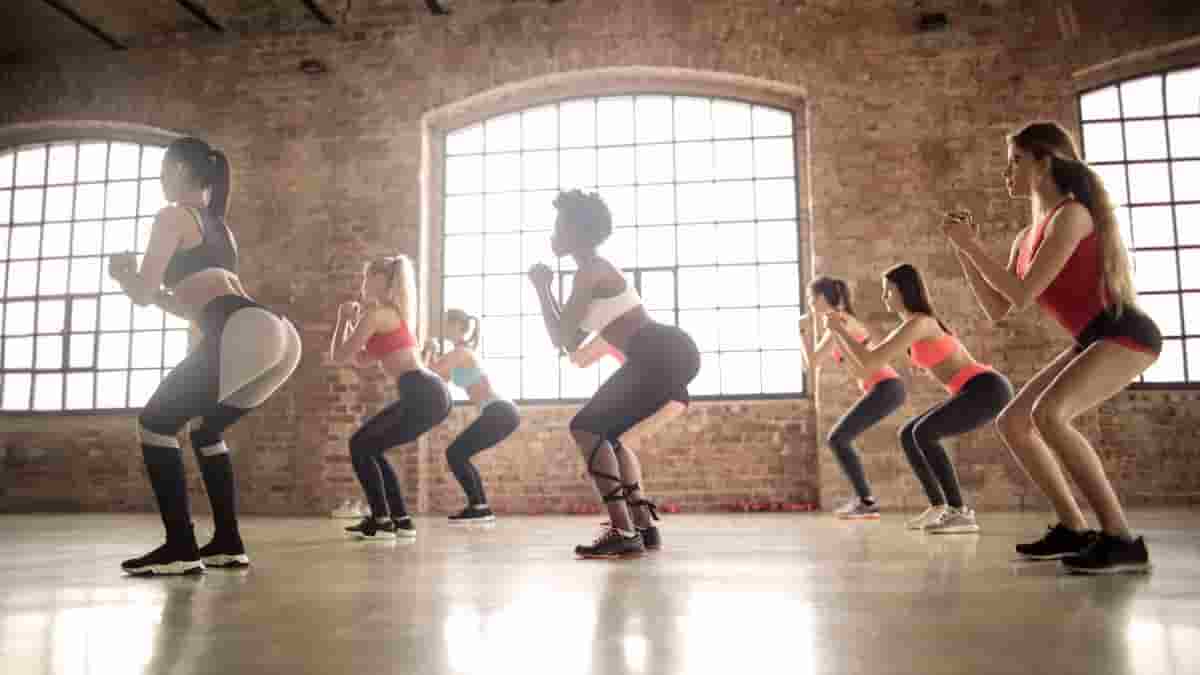
Here is your complete guide to 31 day squat challenge.
Introduction to 31 Day Squat Challenge
Are you ready to take your fitness to the next level? The 31 day squat challenge is an exciting and effective way to improve your strength, endurance, and overall fitness. This challenge is not just about squats; it’s about building a healthier lifestyle and achieving your personal fitness goals.In this article, we will explore the 31 day squat challenge in detail, including its benefits, how to prepare, a day-by-day breakdown, proper techniques, variations, nutrition, and recovery tips. By the end, you’ll be equipped with everything you need to embark on this journey and achieve remarkable results.
What is a 31 Day Squat Challenge?
The 31 day squat challenge is a structured program designed to gradually increase the number of squats you perform each day over the course of a month. This challenge is suitable for individuals of all fitness levels, from beginners to advanced athletes.
Benefits of Doing a 31 Day Squat Challenge
- Increased Strength: Squats target multiple muscle groups, including the quadriceps, hamstrings, glutes, and core.
- Improved Endurance: Regular squatting enhances stamina and overall fitness.
- Enhanced Flexibility: Squats promote better flexibility in the hips, knees, and ankles.
- Boosted Metabolism: Engaging large muscle groups helps increase calorie burn.
- Better Posture: Strengthening the core and lower body can lead to improved posture.
How to Get Started with a 31 Day Squat Challenge
To successfully complete the 31 day squat challenge, follow these steps:
- Assess Your Fitness Level: Determine how many squats you can comfortably perform.
- Set Realistic Goals: Aim for achievable milestones throughout the challenge.
- Create a Plan of Action: Schedule your workouts and stick to them.
- Gather Necessary Equipment: While bodyweight squats are effective, consider using weights for added resistance.
- Schedule Your Workouts: Consistency is key. Choose a time that works best for you.
Preparing for the Challenge
Before diving into the 31 day squat challenge, it’s essential to prepare adequately. Here are some tips:
Assessing Your Current Fitness Level
- Test Your Squats: Perform as many squats as you can in one minute. This will help gauge your starting point.
- Identify Strengths and Weaknesses: Recognize areas where you excel and those that need improvement.
Setting Realistic Goals
- Short-Term Goals: Aim to increase your squat count weekly.
- Long-Term Goals: Consider how you want to feel at the end of the challenge.
Creating a Plan of Action
- Daily Schedule: Decide when you’ll perform your squats each day.
- Incorporate Rest Days: Allow your muscles to recover.
Gathering Necessary Equipment
| Equipment | Purpose |
|---|---|
| Yoga Mat | Provides comfort during floor exercises |
| Dumbbells | Adds resistance for advanced squats |
| Resistance Bands | Enhances strength training |
| Foam Roller | Aids in recovery and muscle relaxation |
Scheduling Your Workouts
- Morning vs. Evening: Choose a time that fits your lifestyle.
- Consistency: Stick to your schedule for the best results.
The 31 Day Squat Challenge
The heart of the 31 day squat challenge is the daily progression of squat repetitions. Below is a detailed breakdown of what to expect each week.
Day 1-7: Beginner Level (25 Squats Per Day)
- Day 1: 25 bodyweight squats
- Day 2: 25 bodyweight squats
- Day 3: 25 bodyweight squats
- Day 4: 25 bodyweight squats
- Day 5: 25 bodyweight squats
- Day 6: 25 bodyweight squats
- Day 7: 25 bodyweight squats
Day 8-14: Intermediate Level (50 Squats Per Day)
- Day 8: 50 bodyweight squats
- Day 9: 50 bodyweight squats
- Day 10: 50 bodyweight squats
- Day 11: 50 bodyweight squats
- Day 12: 50 bodyweight squats
- Day 13: 50 bodyweight squats
- Day 14: 50 bodyweight squats
Day 15-21: Advanced Level (75 Squats Per Day)
- Day 15: 75 bodyweight squats
- Day 16: 75 bodyweight squats
- Day 17: 75 bodyweight squats
- Day 18: 75 bodyweight squats
- Day 19: 75 bodyweight squats
- Day 20: 75 bodyweight squats
- Day 21: 75 bodyweight squats
Day 22-28: Expert Level (100 Squats Per Day)
- Day 22: 100 bodyweight squats
- Day 23: 100 bodyweight squats
- Day 24: 100 bodyweight squats
- Day 25: 100 bodyweight squats
- Day 26: 100 bodyweight squats
- Day 27: 100 bodyweight squats
- Day 28: 100 bodyweight squats
Day 29-31: Maintenance Level (75 Squats Per Day)
- Day 29: 75 bodyweight squats
- Day 30: 75 bodyweight squats
- Day 31: 75 bodyweight squats
Proper Squat Technique
To maximize the benefits of the 31 day squat challenge, it’s crucial to perform squats with proper form. Here’s how:
- Feet Shoulder-Width Apart: Position your feet so they are aligned with your shoulders.
- Toes Slightly Turned Out: This helps with balance and stability.
- Chest Up, Shoulders Back: Maintain an upright posture to protect your back.
- Engage Core: Tighten your abdominal muscles to support your spine.
- Sit Back and Down: Imagine sitting in a chair, pushing your hips back.
- Knees Tracking Over Toes: Ensure your knees don’t extend past your toes.
- Depth of Squat: Aim to lower your hips below your knees for maximum effectiveness.
- Breathing Pattern: Inhale as you lower down, exhale as you push back up.
Proper Squat Form
| Component | Description |
|---|---|
| Feet Position | Shoulder-width apart, toes slightly out |
| Back Position | Straight, chest up |
| Core Engagement | Tighten abdominal muscles |
| Knee Alignment | Knees should not pass toes |
| Depth | Lower hips below knees |
| Breathing | Inhale down, exhale up |
Squat Variations
To keep your workouts interesting and challenging, consider incorporating different squat variations. Here are some effective options:
- Bodyweight Squats: The basic squat, great for beginners.
- Goblet Squats: Hold a dumbbell or kettlebell at chest level to add resistance.
- Sumo Squats: Wider stance to target inner thighs.
- Pistol Squats: A challenging single-leg squat for advanced athletes.
- Overhead Squats: Hold a weight overhead to engage the core and improve stability.
- Jump Squats: Add a jump at the top of the squat for a cardio boost.
Squat Variations
| Variation | Benefits |
|---|---|
| Bodyweight Squats | Great for beginners |
| Goblet Squats | Adds resistance, engages core |
| Sumo Squats | Targets inner thighs |
| Pistol Squats | Improves balance and strength |
| Overhead Squats | Enhances core stability |
| Jump Squats | Boosts cardio and explosiveness |
Nutrition and Recovery
Proper nutrition and recovery are essential components of the 31 day squat challenge. Here’s how to optimize both:
Importance of Proper Nutrition
- Balanced Diet: Focus on whole foods, including lean proteins, healthy fats, and complex carbohydrates.
- Pre-Workout Fuel: Consume a light snack rich in carbohydrates and protein before workouts.
- Post-Workout Recovery: Eat a meal high in protein and carbohydrates to aid muscle recovery.
Protein Intake for Muscle Recovery
- Aim for 1.2 to 2.0 grams of protein per kilogram of body weight, depending on your activity level.
- Include sources like chicken, fish, beans, and legumes.
Hydration and Its Benefits
- Drink plenty of water before, during, and after workouts.
- Consider electrolyte drinks for intense sessions.
Stretching and Mobility Exercises
- Incorporate stretching routines to improve flexibility and prevent injuries.
- Focus on hip flexors, quadriceps, hamstrings, and calves.
Rest and Recovery Days
- Schedule at least one rest day per week.
- Listen to your body; if you feel fatigued, take additional rest.
Nutrition and Recovery
| Aspect | Recommendations |
|---|---|
| Balanced Diet | Whole foods, lean proteins, healthy fats |
| Pre-Workout Fuel | Light snack with carbs and protein |
| Post-Workout Meal | High in protein and carbohydrates |
| Protein Intake | 1.2 to 2.0 g/kg of body weight |
| Hydration | Plenty of water, consider electrolytes |
| Stretching | Focus on major muscle groups |
| Rest Days | At least one per week |
Frequently Asked Questions About 31 Day Squat Challenge
Can I do the challenge every day?
Yes, the 31 day squat challenge is designed for daily practice, but it’s essential to listen to your body and take rest days as needed.
Read Also: Quad Exercises Dumbbells.
What if I miss a day?
If you miss a day, don’t be discouraged. Simply continue from where you left off. Consistency is key.
Read Also: Quad Machine.
Can I modify the challenge?
Absolutely! Adjust the number of squats based on your fitness level and comfort.
Read Also: Free Weight Exercises for Quadriceps.
How long should I rest between sets?
Rest for 30-60 seconds between sets, depending on your fitness level and how you feel.
Read Also: CrossFit Back Exercises.
Can I combine the challenge with other workouts?
Yes, you can integrate the 31 day squat challenge with other strength or cardio workouts, but ensure you allow for adequate recovery.
Read Also: Overhead Squat WOD.
Conclusion
The 31 day squat challenge is more than just a fitness program; it’s a commitment to improving your strength, endurance, and overall well-being. By following the guidelines outlined in this article, you can embark on a transformative journey that not only enhances your physical fitness but also boosts your confidence and motivation.
Read Also: The Surprising Health Benefit of Celery Tea.
Celebrate your progress, stay consistent, and encourage others to join you in this challenge. Remember, every squat brings you one step closer to your goals. Let’s get started on this exciting journey together! This comprehensive guide to the 31 day squat challenge is designed to inspire and equip you with the knowledge you need to succeed. Whether you’re a beginner or an experienced athlete, this challenge can be tailored to your fitness level, helping you achieve remarkable results. Happy squatting!
Read Also: Front Squat Program.
Exercise
Front Squat Program for Strength
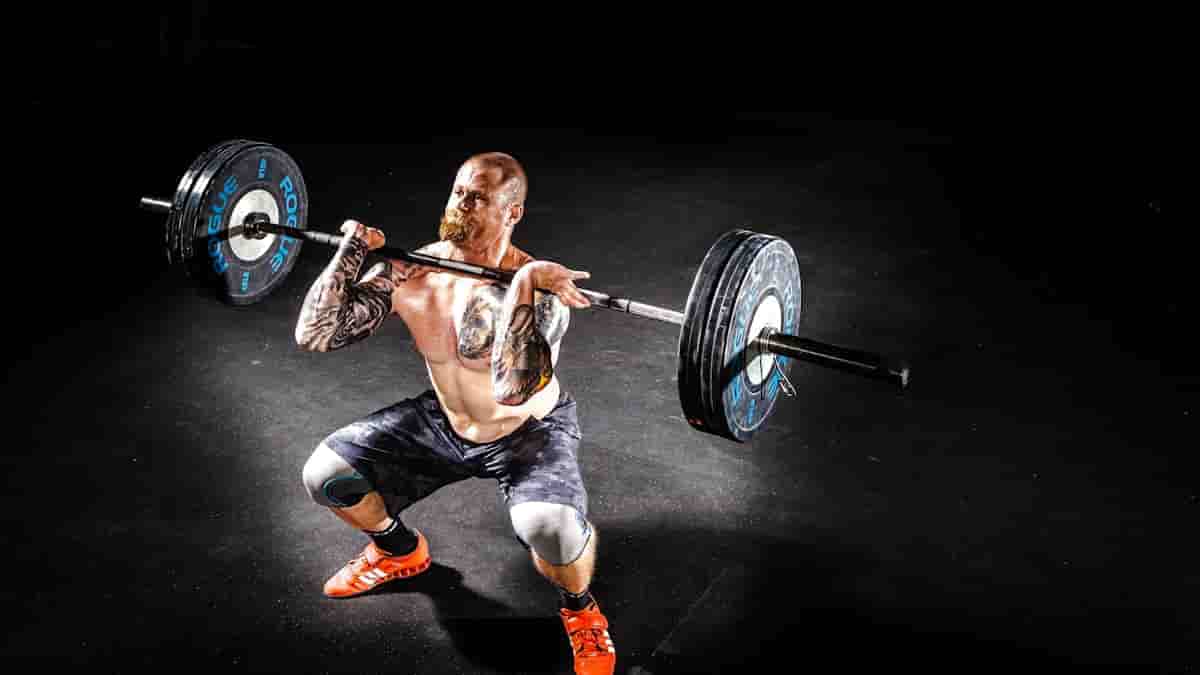
Here is your complete guide to front squat program.
Introduction to Front Squat Program
Let’s explore the best front squat program. Front squats are a powerhouse exercise that can significantly enhance your strength training routine. Whether you’re a seasoned athlete or a beginner looking to improve your fitness, incorporating a front squat program into your regimen can yield impressive results. This exercise not only targets major muscle groups but also promotes better posture, core stability, and overall athletic performance.
In this article, we will explore the intricacies of a front squat program, including its benefits, proper technique, and how to create an effective training plan. By the end, you’ll have all the tools necessary to elevate your front squat game and achieve your fitness goals.
Understanding the Front Squat
The front squat is a variation of the traditional squat where the barbell is positioned on the front of your shoulders, rather than across your back. This unique positioning shifts the center of gravity, requiring greater core engagement and balance.
Muscles Targeted
The front squat primarily targets the following muscle groups:
- Quadriceps: The main muscles responsible for extending your knees.
- Hamstrings: Assist in stabilizing the movement and flexing the knees.
- Glutes: Critical for hip extension and overall power.
- Core: Engaged throughout the lift to maintain stability and posture.
Comparison with Other Squats
| Aspect | Front Squat | Back Squat |
|---|---|---|
| Bar Position | Front of shoulders | Across upper back |
| Muscle Emphasis | Quadriceps and core | Hamstrings and glutes |
| Posture Requirement | Upright torso | More forward lean |
| Load Capacity | Generally lower than back squat | Higher load capacity |
| Core Engagement | Higher due to upright position | Moderate |
Understanding these differences can help you choose the right squat variation for your training goals.
Creating a Front Squat Program
Before diving into a front squat program, it’s crucial to assess your current fitness level. Here are some steps to help you gauge your readiness:
- Mobility Assessment: Check your ankle, hip, and thoracic spine mobility. Poor mobility can hinder your squat depth and form.
- Strength Assessment: Perform a bodyweight squat to evaluate your technique and strength. If you struggle with form, consider focusing on bodyweight squats or lighter weights before progressing.
Program Structure
A well-structured front squat program should include the following components:
- Frequency: Aim to train front squats 2-3 times per week, allowing sufficient recovery between sessions.
- Volume: Start with 3-4 sets of 6-8 reps, adjusting based on your experience and goals.
- Progression: Gradually increase the weight as you become more comfortable with the movement. Aim for a 5-10% increase in weight every 2-3 weeks.
Sample 4-Week Front Squat Program
Here’s a sample program to get you started:
| Week | Day 1 (Heavy) | Day 2 (Volume) | Day 3 (Technique) |
|---|---|---|---|
| 1 | 4×6 @ 70% 1RM | 4×8 @ 65% 1RM | 4×5 @ 60% 1RM |
| 2 | 4×5 @ 75% 1RM | 4×7 @ 70% 1RM | 4×4 @ 65% 1RM |
| 3 | 4×4 @ 80% 1RM | 4×6 @ 75% 1RM | 4×3 @ 70% 1RM |
| 4 | 4×3 @ 85% 1RM | 4×5 @ 80% 1RM | 4×2 @ 75% 1RM |
Key Points for Each Training Day
- Day 1 (Heavy): Focus on lifting heavier weights with fewer reps. This day is about building strength.
- Day 2 (Volume): Increase the number of reps with moderate weights. This helps build endurance and muscle hypertrophy.
- Day 3 (Technique): Concentrate on form and technique with lighter weights. This is crucial for preventing injuries and improving overall performance.
Technique and Form
Executing a front squat with proper form is essential for maximizing benefits and minimizing injury risk. Follow these steps:
- Setup: Stand with your feet shoulder-width apart. Position the barbell across the front of your shoulders, using a clean grip or crossed-arm grip.
- Brace Your Core: Engage your core muscles to maintain stability throughout the lift.
- Squat Down: Initiate the squat by bending at the hips and knees, keeping your torso upright and chest lifted.
- Depth: Aim to squat down until your thighs are at least parallel to the ground. Deeper squats can be beneficial if your mobility allows.
- Ascent: Push through your heels to return to the starting position, ensuring your knees track over your toes.
Common Mistakes to Avoid
- Leaning Forward: Keep your torso upright to avoid excessive strain on your back.
- Knees Caving In: Ensure your knees track in line with your toes to prevent injury.
- Not Engaging the Core: A strong core is vital for maintaining proper posture and balance.
Tips for Improving Form
- Mobility Exercises: Incorporate stretches and mobility drills for your hips, ankles, and thoracic spine.
- Video Analysis: Record your squats to identify areas for improvement.
- Practice with Lighter Weights: Focus on form before increasing the load.
Accessory Exercises
Incorporating accessory exercises into your training can help improve your front squat performance. Here are some effective options:
- Lunges: Target the quads and glutes while enhancing balance and stability.
- Deadlifts: Strengthen the posterior chain, which is crucial for overall squat performance.
- Core Exercises: Planks, Russian twists, and hanging leg raises can help build core strength, supporting your front squat technique.
Sample Accessory Exercise Routine
| Exercise | Sets | Reps |
|---|---|---|
| Lunges | 3 | 10-12 |
| Deadlifts | 3 | 6-8 |
| Planks | 3 | 30-60 seconds |
| Russian Twists | 3 | 15-20 per side |
Nutrition for Optimal Performance
Nutrition plays a crucial role in your strength training journey. Here are some tips to optimize your diet for a front squat program:
- Macronutrient Ratios: Aim for a balanced intake of carbohydrates, proteins, and fats. A common ratio is 40% carbs, 30% protein, and 30% fats.
- Protein Sources: Include lean meats, fish, eggs, dairy, legumes, and plant-based proteins to support muscle recovery and growth.
- Carbohydrate Timing: Consume complex carbohydrates before and after workouts to fuel your performance and aid recovery.
Hydration Tips
- Stay Hydrated: Drink plenty of water throughout the day, especially before and after workouts.
- Electrolyte Balance: Consider electrolyte drinks during intense training sessions to maintain hydration levels.
Should You Contact a Coach for a Front Squat Program or Can You Do It Yourself?
When it comes to strength training, particularly with complex movements like the front squat, many individuals find themselves at a crossroads: Should they seek the guidance of a coach or attempt to develop their own program? This article explores both options, weighing the benefits of professional coaching against the possibility of self-directed training.
Benefits of Working with a Coach
One of the primary advantages of hiring a coach is their expertise in strength training and biomechanics. A qualified coach can provide:
- Personalized Programming: Coaches can tailor a front squat program to your specific needs, goals, and fitness level. They can adjust the volume, intensity, and frequency based on your progress and any limitations you may have.
- Technique Correction: Proper form is crucial for maximizing gains and preventing injuries. A coach can observe your technique in real-time and provide immediate feedback, helping you avoid common mistakes such as caving elbows or improper squat depth.
Accountability and Motivation
Having a coach can significantly enhance your motivation and accountability. With a coach, you are more likely to:
- Stay Committed: Scheduled sessions create a sense of responsibility, encouraging you to stick to your training plan.
- Push Your Limits: Coaches can challenge you to lift heavier weights or try new techniques that you might shy away from when training alone.
When You Might Consider Training Yourself
If you have a solid understanding of strength training principles and access to reliable resources, you may feel confident in developing your own front squat program. Here are some reasons why self-training could be a viable option:
- Cost-Effective: Training on your own eliminates the financial burden of hiring a coach, allowing you to allocate those funds toward gym memberships or equipment.
- Flexibility: You can design your training schedule around your lifestyle, making it easier to fit workouts into your day without the constraints of a coach’s availability.
Learning Through Experience
Training yourself can also provide valuable learning experiences:
- Self-Discovery: You will learn to listen to your body and understand what works best for you, which can enhance your overall training experience.
- Adaptability: You can experiment with different techniques, rep ranges, and accessory exercises without the need for approval or guidance, allowing for a more personalized approach.
Key Considerations for Self-Training
If you decide to go the self-training route, keep these considerations in mind to ensure a successful front squat program:
Assess Your Current Level
Before starting, evaluate your current strength and mobility. This assessment will help you determine the appropriate starting weight and volume for your front squat program.
Prioritize Technique
Focus on mastering the proper technique before increasing weights. Resources such as instructional videos, articles, and online forums can provide valuable insights into correct form and common pitfalls.
Incorporate Progress Tracking
Keep a training log to track your progress. Documenting your lifts, sets, and reps can help you identify patterns and make necessary adjustments to your program.
Ultimately, the decision to work with a coach or train yourself for a front squat program depends on your individual circumstances, goals, and preferences. If you’re new to strength training or struggle with technique, seeking a coach’s guidance can be invaluable. On the other hand, if you have experience and feel confident in your ability to self-manage your training, you can successfully develop a program on your own.
Common Challenges and Solutions
While training for front squats, you may encounter some challenges. Here are common issues and their solutions:
- Lack of Mobility: If you struggle with depth, incorporate mobility exercises such as hip openers and ankle stretches into your routine.
- Discomfort During the Lift: Experiment with different grip styles (clean grip vs. crossed-arm grip) to find what feels most comfortable.
- Mental Barriers: Fear of heavy lifting can be daunting. Start with lighter weights and gradually increase as your confidence builds.
Solutions and Tips
- Stretching Routines: Dedicate time to stretching before and after workouts to improve flexibility and reduce soreness.
- Mental Strategies: Visualization techniques can help you mentally prepare for lifting heavier weights.
Read Also: Keto Vegetarian Breakfast.
FAQs About Front Squat Program
What is the best way to start a front squat program?
Begin by assessing your fitness level, focusing on mobility and form. Start with bodyweight squats and gradually introduce weights as you become more comfortable.
Read Also: Salmon Breakfast Recipes.
How often should I do front squats?
Aim for 2-3 times per week, allowing for recovery days in between sessions to prevent overtraining.
Read Also: Quad Exercises Dumbbells.
Can beginners perform front squats?
Yes! Beginners can start with bodyweight squats or light weights to master the technique before progressing to heavier loads.
Read Also: Quad Machine.
What are the benefits of front squats compared to back squats?
Front squats emphasize the quadriceps and core, promote better posture, and reduce strain on the lower back compared to back squats.
Read Also: Free Weight Exercises for Quadriceps.
How can I prevent injuries while doing front squats?
Focus on proper form, gradually increase weights, and incorporate mobility work to enhance flexibility and prevent injuries.
Read Also: CrossFit Back Exercises.
Conclusion
Incorporating a front squat program into your training can lead to significant improvements in strength, power, and overall fitness. By understanding the mechanics, following a structured program, and maintaining proper nutrition, you can maximize your results and enjoy the numerous benefits of this essential exercise.
Read Also: The Surprising Health Benefit of Celery Tea.
Now that you have the knowledge and tools to embark on your front squat journey, it’s time to hit the gym and start squatting! Remember, consistency and dedication are key to achieving your fitness goals. Happy squatting!
Read Also: Overhead Squat WOD.
-

 Nutrition1 year ago
Nutrition1 year agoDates Eating Benefits: Here Is Your Complete Guide
-

 Fitness1 year ago
Fitness1 year agoAbs Workout for Beginner: Your Ultimate Guide!
-

 Exercise1 year ago
Exercise1 year agoBest Exercises For Bicep: Your Complete Guide
-

 Fitness1 year ago
Fitness1 year agoHow Many Calories in a Potato? Nutrition Facts
-

 Exercise1 year ago
Exercise1 year agoWarmup for Back Workout: Your Complete Guide
-

 fitness diet1 year ago
fitness diet1 year agoFast Food That’s Gluten Free: Your Complete Guide
-

 Nutrition1 year ago
Nutrition1 year agoNutrition Facts Of Strawberries: Your Ultimate Guide
-

 fitness diet1 year ago
fitness diet1 year agoEffects of Sugar in the Body? Your Complete Guide



